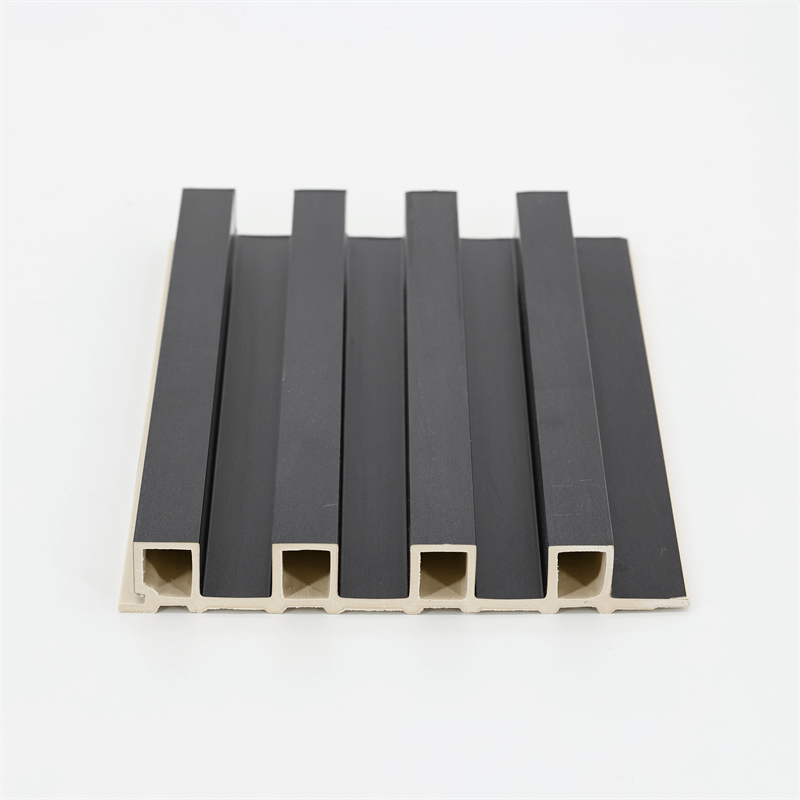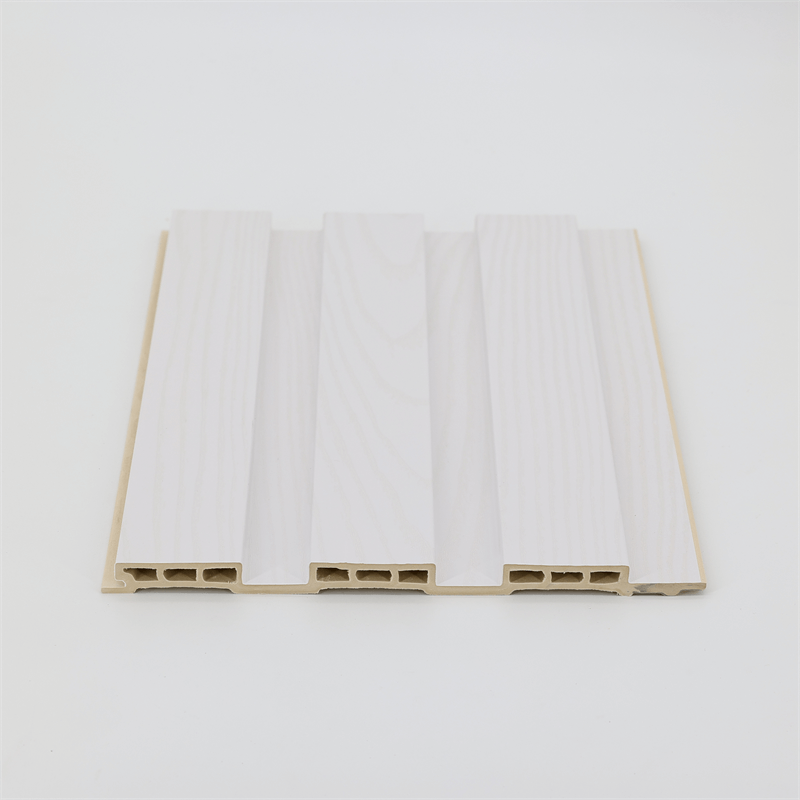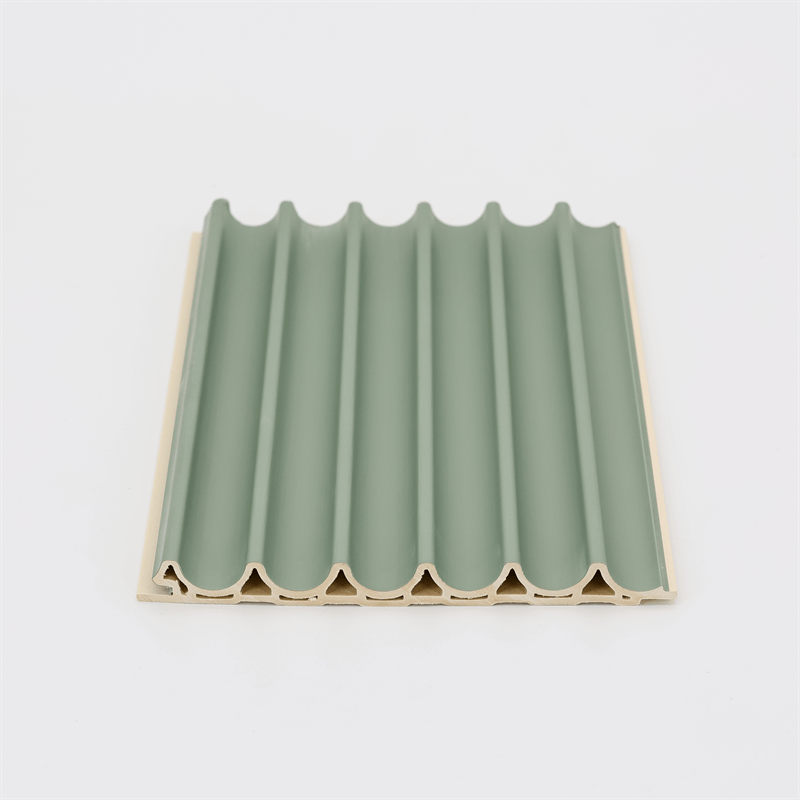WPC (Wood-Plastic Composite) wall panels have gained popularity in the construction and interior design industries due to their durability, aesthetic appeal, and sustainability.
These panels are manufactured through a carefully designed process that combines wood fibers and thermoplastics to create a composite material that mimics the natural beauty of wood while harnessing the advantages of plastic.
This essay aims to provide an in-depth understanding of the manufacturing process of WPC wall panels, exploring the key steps involved, the materials used, and the significance of each stage in producing high-quality panels.
I. Material Selection and Preparation:
- Wood Fibers: The manufacturing process begins with the selection of wood fibers obtained from sustainable sources, such as sawdust, wood chips, or agricultural residues. These wood fibers serve as a reinforcement material in the composite, providing strength, dimensional stability, and natural aesthetics to the panels. The wood fibers are typically dried and processed to remove impurities and ensure uniformity in size and moisture content.
- Thermoplastics: The next step involves selecting the appropriate thermoplastic material, such as polyethylene (PE), polyvinyl chloride (PVC), or polypropylene (PP). These thermoplastics act as a binder and matrix for the wood fibers, enhancing the durability, moisture resistance, and workability of the final product. The thermoplastic material is typically in the form of pellets or granules.
II. Mixing and Blending:
- Mixing of Wood Fibers and Thermoplastics: Once the wood fibers and thermoplastics are prepared, they are introduced into a mixing chamber or extruder. The mixing process involves combining the wood fibers and thermoplastics in specific proportions to achieve the desired mechanical properties and aesthetic characteristics. This step ensures a homogeneous distribution of the wood fibers within the thermoplastic matrix.
- Additives and Enhancements: Various additives, such as stabilizers, colorants, UV inhibitors, and processing aids, can be incorporated into the mixture to enhance the performance and visual appeal of the WPC panels. These additives help improve the panels’ resistance to UV degradation, enhance color consistency, and facilitate the extrusion process.
III. Extrusion Process:
- Extrusion: The mixed material is fed into an extruder, which is a machine that applies heat and pressure to melt the thermoplastic and mix it with the wood fibers. The extruder consists of a barrel, a screw, and a die. The rotating screw moves the material through the barrel, applying heat and pressure to melt the thermoplastic and facilitate the blending of the wood fibers.
- Shaping and Cooling: As the material is extruded through the die, it takes the shape of the desired profile, which is the cross-sectional shape of the WPC wall panel. The extruded material is then cooled rapidly using water or air, solidifying it into the final shape. The cooling process ensures dimensional stability and prevents deformation of the panels.
- Surface Texturing: Depending on the desired finish, the surface of the extruded panels may undergo additional processing to create textures or patterns. This can be achieved through embossing, brushing, or other techniques that enhance the aesthetic appeal and replicate the natural grain of wood.
IV. Finishing and Quality Control:
- Cutting and Sizing: After the extrusion process, the continuous extruded profiles are cut into the desired lengths, typically according to project specifications. The cut panels undergo further sizing and trimming to achieve precise dimensions and smooth edges.
- Surface Treatment and Coating: To enhance the durability and longevity of WPC wall panels, surface treatments and coatings can be applied. This may include the application of protective layers, such as UV-resistant coatings or anti-scratch coatings, which enhance the panels’ resistance to wear, fading, and surface damage.
- Quality Control: Throughout the manufacturing process, quality control measures are implemented to ensure that the WPC panels meet the required standards. This involves inspecting the raw materials, monitoring the mixing and extrusion processes, and conducting tests on the finished panels to assess their mechanical properties, dimensional accuracy, and overall quality.
The manufacturing process of WPC wall panels involves a series of carefully orchestrated steps, starting from the selection and preparation of wood fibers and thermoplastics to the extrusion, shaping, and finishing stages.
Each step plays a crucial role in creating high-quality panels that exhibit the desired aesthetic appeal, durability, and moisture resistance.
By understanding the manufacturing process, designers, architects, and consumers can appreciate the complexity involved in producing WPC wall panels and make informed decisions regarding their usage and application in various construction and design projects.
In conclusion, the manufacturing process of WPC wall panels is a precise and intricate procedure that combines wood fibers and thermoplastics to create a composite material with exceptional durability, aesthetic appeal, and moisture resistance.
The careful selection and preparation of raw materials, followed by the mixing and blending stages, ensure a homogeneous distribution of wood fibers within the thermoplastic matrix.
The extrusion process shapes the material into the desired profile, while surface treatments and coatings enhance the panels’ longevity and visual appeal.

Understanding the manufacturing process of WPC wall panels is essential for designers, architects, and consumers who seek to incorporate these panels into their construction and design projects.
It allows them to appreciate the craftsmanship involved and make informed decisions regarding the selection and application of WPC panels.
The ability to customize the material composition, surface textures, and finishes offers a wide range of design possibilities, allowing for the creation of unique and visually stunning spaces.
Moreover, the use of WPC wall panels presents several advantages, such as their sustainable nature, resistance to moisture and mold, durability, and ease of maintenance.
These panels provide a viable alternative to traditional wall coverings, such as natural wood or gypsum board, offering a balance between aesthetics and functionality.
As the demand for eco-friendly and innovative building materials continues to grow, WPC wall panels have emerged as a compelling solution for interior and exterior applications.
Their ability to replicate the beauty of wood while exhibiting the advantages of plastic makes them a versatile and sustainable choice.
By understanding the intricacies of their manufacturing process, we can appreciate the craftsmanship and expertise behind the creation of these remarkable panels, paving the way for their continued adoption in the construction and design industries.


